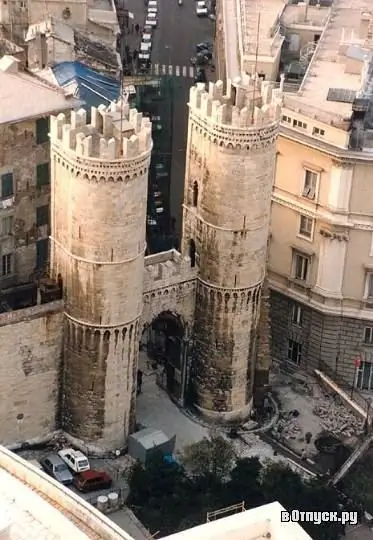
Description of the attraction
The Porta Soprana gate served for a time as the main entrance gate to Genoa. Today it is one of the best-preserved medieval stone buildings, located on the top of the Piano di Sant'Andrea hill near the historic center of Ravecca, the old city quarter. Nearby is the house-museum of Christopher Columbus, the most famous native of Genoa. Both Porta Soprana towers and the Columbus Museum are open to the public.
The historic gate was “swallowed up” by the construction boom that erupted in the city at the beginning of the 14th century: a one-story house was built under the Porta Soprana arch between the two towers, in which the son of Samson, the executioner who beheaded the French king Louis XVI during the revolution, lived. In the 19th century, another floor was added to the house.
In the same 19th century, both Porta Soprana towers were converted into a prison, as was the nearby Sant'Andrea monastery. Prisoners and jailers lived in the same room. Around 1890, the gates, the battlements of which had already disappeared from the bastions, were restored by the architect Alfredo d'Andrade, head of the Directorate of Fine Arts. With his participation, the north tower of Porta Soprana and the arch overlooking the central aisle were also restored. The column capitals were complemented by Romanesque sculptures of eagles. The South Tower was located within the boundaries of a residential building until the 1930s, and was later restored under the direction of Orlando Grosso.






